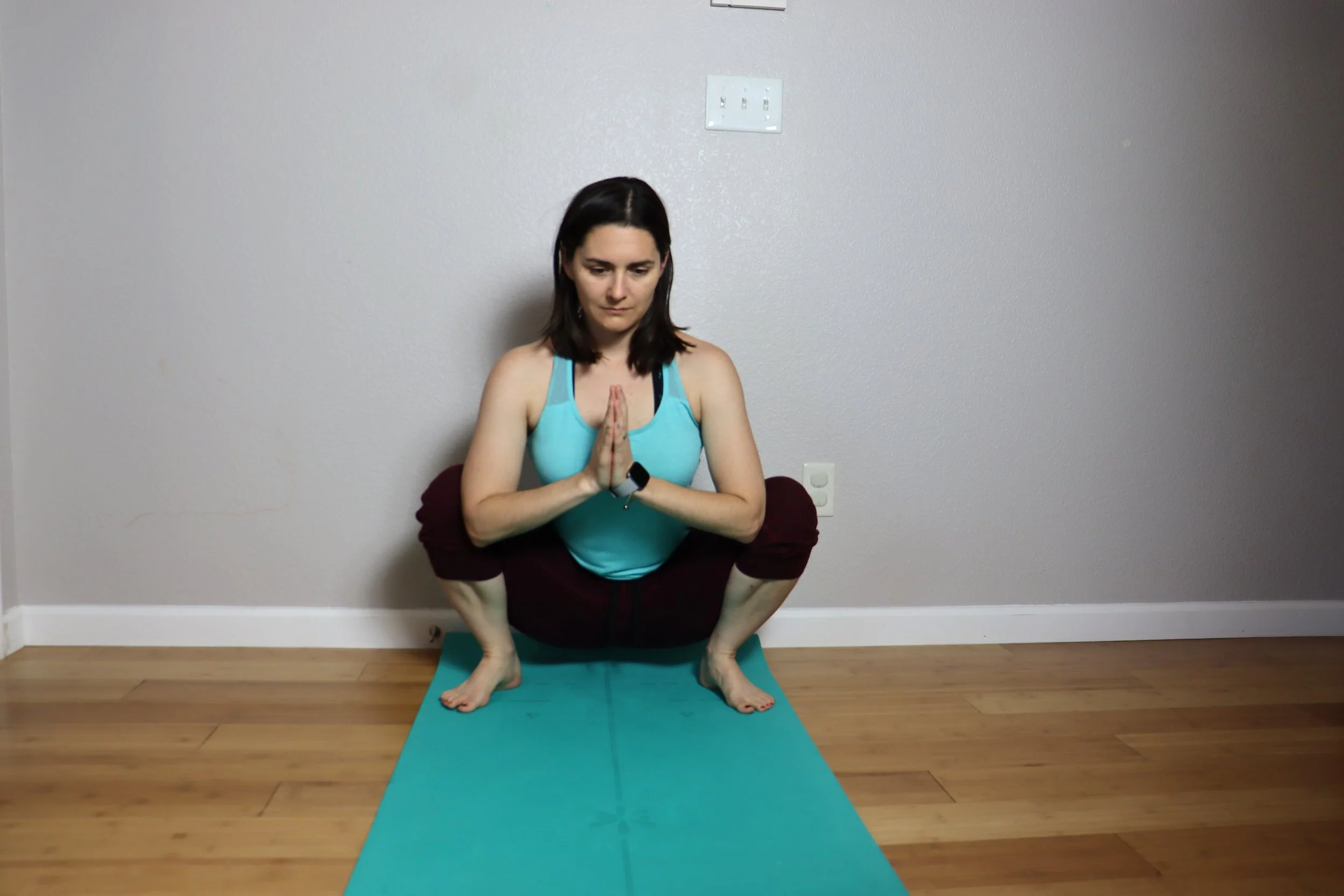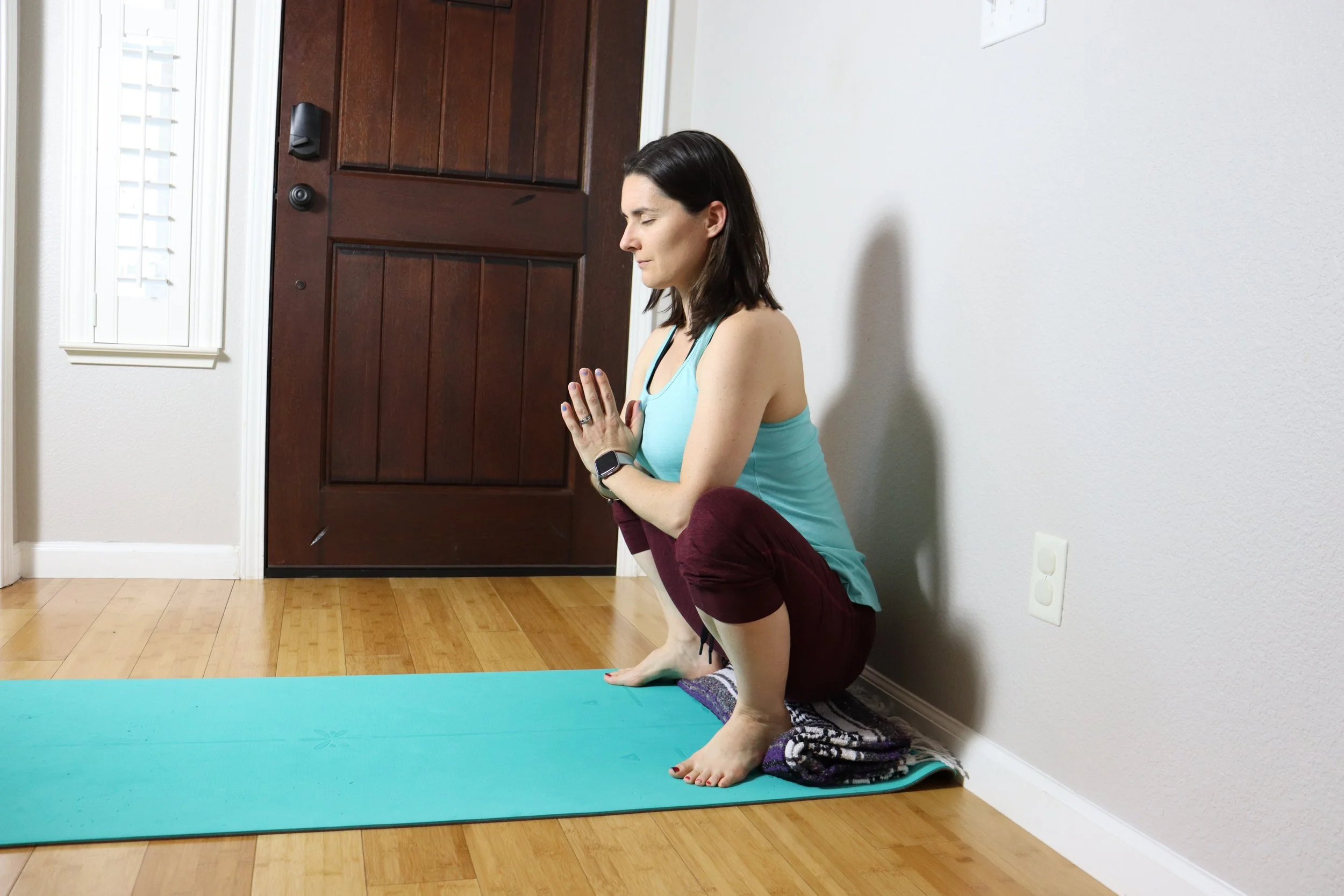5 Ways to Make a Yogic Squat (Malasana) Easier
/Yogic Squat (Malasana, also Garland Pose) is a low squat that is a common body position around the world. So why can it be so hard for many people to do?
Growing up, my extended family thought my sister and I were weird because we squatted on the ground instead of sitting. We spent a couple early years of our lives in Panama, where squatting was a way to avoid sitting with bugs. Squatting has been a natural movement throughout human existence. Yet many contemporary lifestyles involve sitting in chairs or on toilets (aka in raised, above-ground positions without deep ankle, knee, and hip flexion), which reduces the necessity of being in a squat. As a result, people are less and less used to squatting.
Besides a lack of use, other body conditions also make squatting difficult. They include
1. Limited hip mobility.
2. Weak core and postural muscles.
3. Tight or injured ankles.
4. Knee pain and conditions.
However, there are many benefits to practicing a yogic squat: It stretches your inner thighs and hips, improves your balance, and strengthens you core and postural muscles.
How to Do It
Stand with your feet hip-width apart and turned slightly out.
Bend your knees and lower your hips down toward the ground.
Bring your hands together in prayer position (Anjali Mudra) in front of your chest with your upper arms pressing into the inside of your thighs.
Press your feet down into the floor and lengthen your spine from your sacrum to the crown of your head.
Hold the pose for 5–10 breaths, then slowly release your arms then legs.
If you have difficulty doing a Yogic Squat—it is hard to get into, painful in your ankles, knees, or hips, or you can’t bring your heels to the ground—here are five variations and tips for practicing it.
Try using a folded blanket/towel under your heels
If you round your back, you could be putting excess strain on your lower back. To help you find length and reduce rounding, place your hands up on the seat of a chair, use the support of a wall, or hold a doorknob to keep your chest lifted.
Engage your core muscles and lift the pelvic floor. This will help you maintain your balance and support your lower back.
If your heels don’t come all the way to the floor, use a folded blanket or towel under your heels or sit on a block or bolster to support you.
You can also try this squat by bringing your hands to the floor in front of you. However, do this for support or if you want to explore some gentle side-to-side movement. Be mindful if you round your back forward when you bring your arms down.
Another option, which is the least weightbearing, is to do the pose laying down on your back with your feet up on a wall. This allows you to practice the shape of pressing down into the feet, external rotation in the hips, and lengthening the back without your joints having to support all of your body weight.
Variations in body proportions can also make this pose harder or easier. If this position presents significant challenges for your body, acknowledge where your body is today. This pose helps you establish a connection with your center, and embracing where your body is in the moment helps cultivate that connection.



